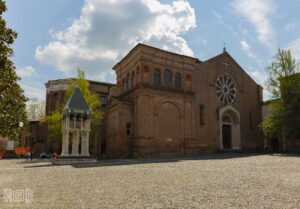Bologna is the home of tortellini, tagliatelle, lasagne and balanzoni. Discover with us the art of fresh pasta: the magic union of eggs and flour. What are its origins? Where to taste and buy it? What experiences can I do to learn more about the art of sfoglia? Discover with us the restaurants and shops that pass on this tradition, and see where you can dabble in this art.
The origins of fresh pasta
Pasta is a very ancient discovery. In fact, the first clue we have about its existence dates to the first millennium BC.
The Etruscan people already knew this recipe. Proof of this, a grave in Cerveteri contains depictions of all the necessary for pasta: a pastry board, a rolling pin, a ladle and even the sperone, the wavy cutter.
Who are the sfogline?
The women that prepare sfoglia for the whole family have always been called sfogline. Fresh pasta is the basis of all the traditional dishes, and it has modest origins. In fact, the less well-off families could not afford expensive food. This is why flour and eggs were the only ingredients always available in all the houses. Preparing pasta at home meant both saving money and feeding all the family members.
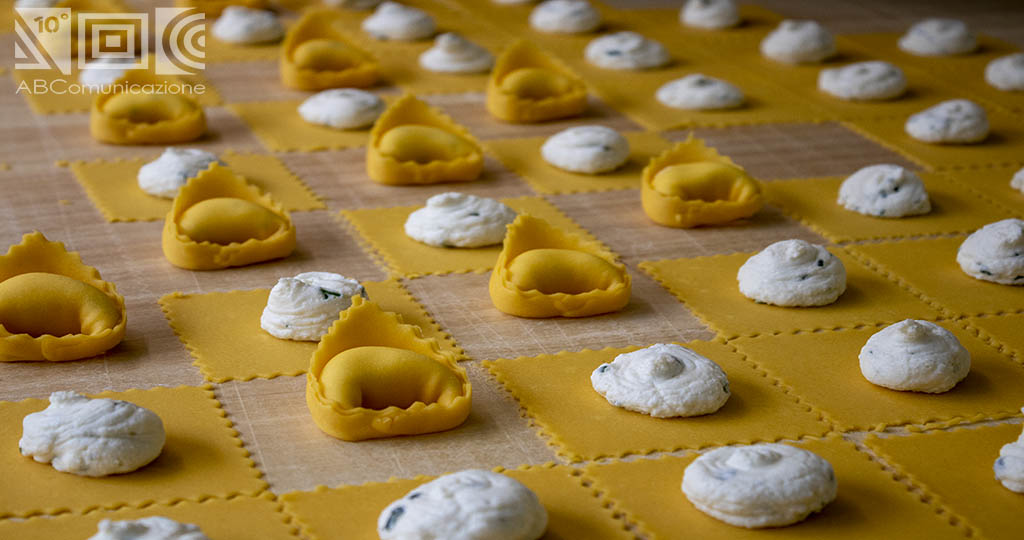
Therefore, to play a fundamental role was the creativity of sfogline: starting with few ingredients, they were always able to vary the meals they served. The most frequent were the tagliolini in brodo (a sort of noodle soup), the tagliatelle, the gnocchi, the tortelloni, the maltagliati in the bean soup. These are the clippings of sfoglia: nothing is to be wasted, and it denotes really well the modest background from which pasta comes from.
In Bologna and in Romagna there are two words that indicate the sfoglina: these are respectively zdaura e azdora. They are dialectal terms that literally mean “the ruler”, precisely because according to the tradition the woman was the boss of the house. She was the one that ruled the house and fed it.
Lasagne
Not everyone knows that lasagna has very ancient origins. In fact, the Greeks, the Romans and the Etruscan people already ate a simil dish. The Hellenics called it laganon, while the Latins named it laganum, a term that is also present in the writings of Cicerone. It was a sort of very thin bread, created from a mash of seeds. Usually it was cut in stripes, seasoned with meat and then cooked in the oven.
The cheese, that is besciamella, was introduced in the recipe only in the 14th century, in the Angevin Court of Naples. In the same city, after two centuries, tomato sauce was added as well. The sfoglia was still a leavened dough: for the one made with eggs, it still takes several years. However, since the Middle Ages it was boiled, and not baked anymore.
Lasagne today
The layered lasagna that we all know was invented by the bolognese Francesco Zambrini in 1863. In that year he published The cuisine book of the 14th century (Il libro della cucina del sec. XIV), that for the first time contained the recipe of the layered lasagna.
It was in 1935, with Paolo Monelli, that the bolognese lasagna obtained a huge success and international recognition. In fact, in that year he published The Wandering Glutton, in which the recipe indicates for the first time to prepare the spinach sfoglia.
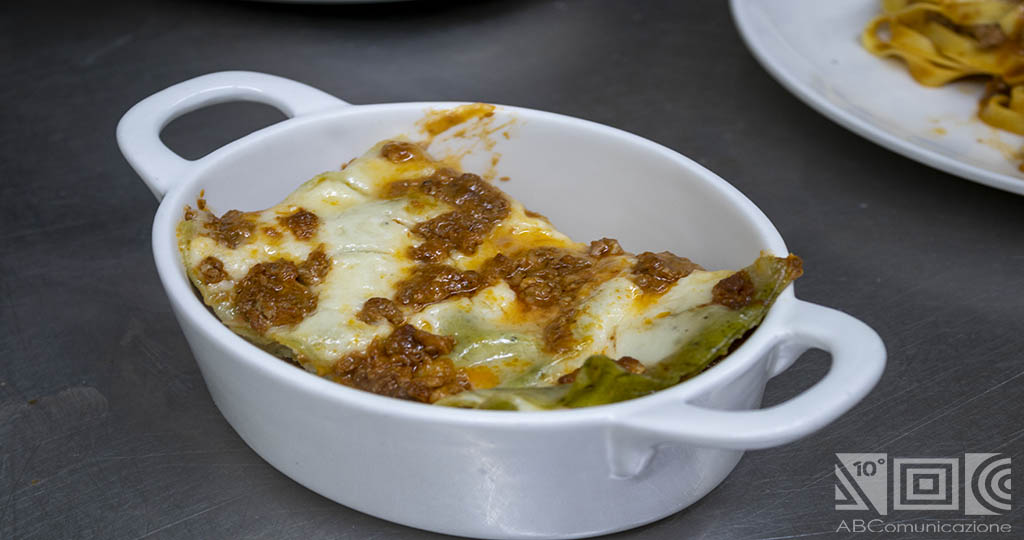
So, if you go to Bologna and order lasagne, you will taste a dish with at least six layers of green sfoglia, alternated by ragù and besciamella.
The original and traditional recipe was deposited in 2003 by the Chamber of Commerce of Bologna. You will need to prepare besciamella and a good bolognese ragù, made with celery, carrot, onion, bacon, white wine and tomato sauce. Then, roll out the sfoglia and cut it into rectangles, which you will then boil in salted water. Put them in cold water in order to stop the cooking. And now, butter the tin and put together the layers! Sprinkle plenty of grated parmesan and let bake for forty minutes! Then, remove and here you are your Sunday lunch!
Tagliatelle
The origins of tagliatelle are uncertain as well. However, it is probable that they come from the roman lagane too.
According to the legend, tagliatelle were invented in the late 5th century by the bolognese Mastro Zefirano, the chef of the Bentivoglio family. In fact, since Lucrezia Borgia stopped in Bologna, Mastro Zefirano invented the tagliatelle, precisely being inspired by the long blond hair of the lady. A few days later, she went to Ferrara, where she married the Duke Alfonso d’Este.
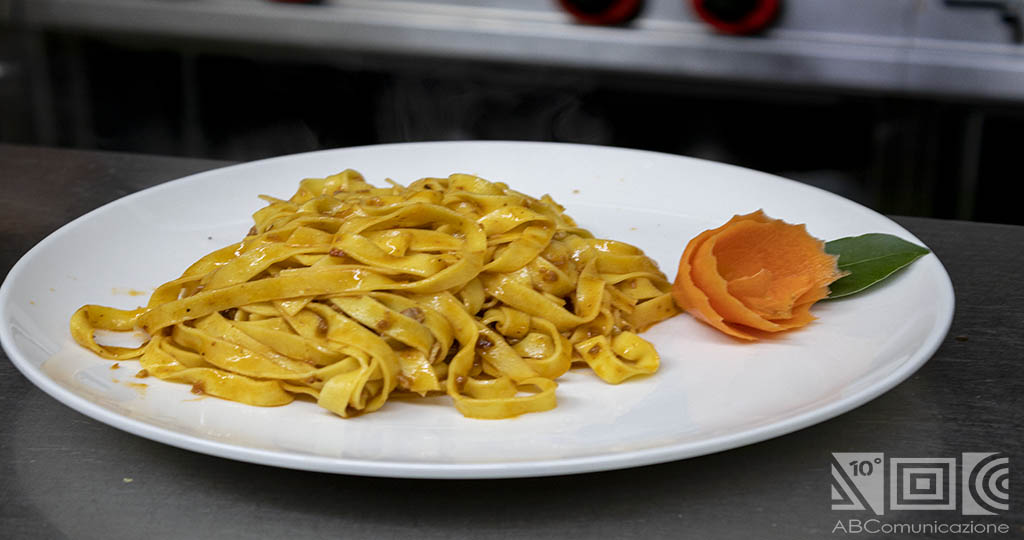
The first writing containing this pasta shape dates to the following century. The chef Cristoforo di Messisbugo, who worked in the Este Court of Ferrara, in a treaty wrote lasagnuolle overo tagliatelle tirate. Translated, it means “little lasagne that are rolled out tagliatelle”.
How are tagliatelle made?
It is very simple, you just need to prepare the sfoglia dough with eggs and flour. After letting it rest for at least one hour, you roll it out up to when it reaches the thickness of one millimeter. Lastly, you roll it up and cut into thin slices of 6-8 millimeters. Then you compose the nests.
As tradition, the seasoning that matches perfectly with tagliatelle is ragù. Even though it is usually linked to the city of Bologna, few know that this word actually comes from French. In fact, in the origins this term was ragoût: it is a derivative of goût, that literally means “awaken the taste”, so the appetite.
Tortellini
This pasta shape has a very ancient history. In fact, already in the Middle Ages, in 1112, the monks mentioned in their writings the so-called tortelli. The parchment contains Tertia pars tortellorum monachorum est, which is Latin for “the third part is up to the monks”. The recipe was still very different from the one we know now, however we can consider these tortelli the ancestors of tortellini.
Two hundred years later, in the 4th century, also Boccaccio in a novella of the Decameron talks about this stuffed pasta. However, the first time that the word tortellino appears is in 1708. The monks of San Michele in Bosco talk about the tortellini soup as a Christmas plate. In fact, due to its meat filling, it was a very expensive dish. For this reason, almost all the citizens could afford it just during the festivities. The only exception were the aristocrats, who usually bought them at the market in Maggiore Square.
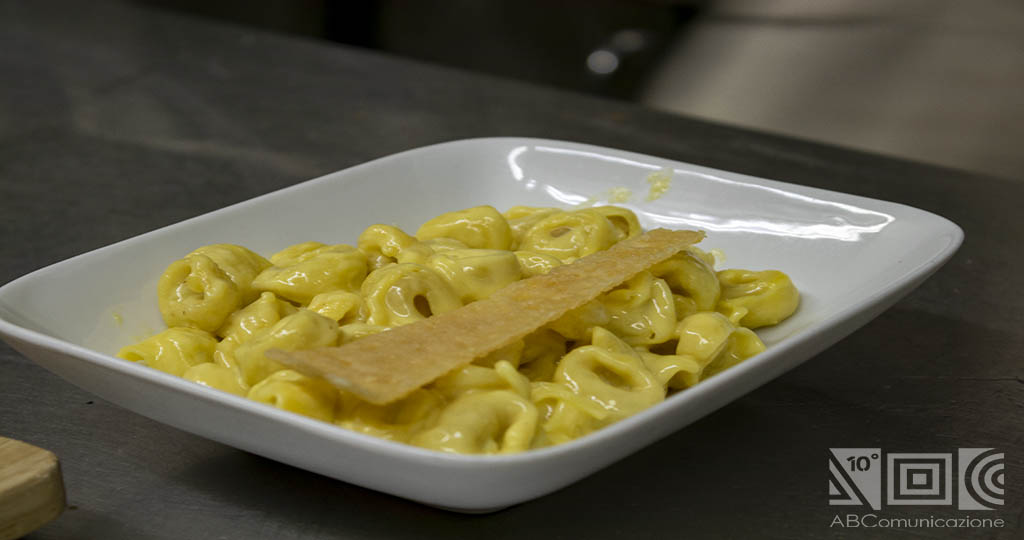
Tortellini in modern times
For years Modena and Bologna claimed the invention of this delicacy, and still there are two different currents of thoughts. However, in the end of 19th century, the intellectual Giuseppe Ceri established that Castelfranco Emilia is the official birthplace of tortellini. It is no coincidence that it is located right in the middle between the two cities. And, still now, the Festival of the Traditional Tortellino takes place there.
A turning point in the story of tortellini was thanks to Luigi and Oreste Bertagni. In Bologna, the two brothers had a workshop where they sold egg pasta, flour, oils, liquors and this kind of grocery. In 1889 they decided to participate in the Universal Exhibition of Paris, showing the tinned tortellini. The novelty of the Bertagni brothers was very successful, so much so that the two won the bronze medal.
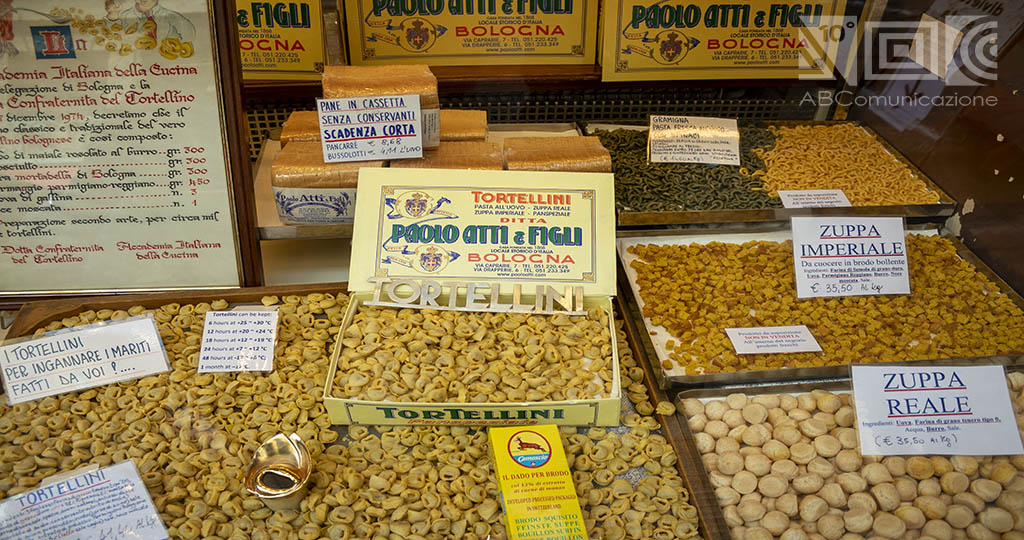
According to a legend, the shape of tortellini imitates a navel. They say the inventor was the owner of an inn. One day, he saw a beautiful woman through the lock of a door, and decided to honor her. How? Creating this new filled pasta format, that for its size and shape reminds of a navel.
The Dotta Confraternita del Tortellino (Erudite Fraternity of Tortellino) selected the recipe of a bolognese lady as official. This includes eggs-and-flour sfoglia, the filling made with loin browned in butter, raw ham, mortadella, parmesan, nutmeg and eggs, and capon broth for serving.
Tortellini bugiardi: lying tortellini
As we already said, all the families could afford pasta, but not always the same happened for the filling, indeed. So the bolognese zdaure came up with a trick: they closed the sfoglia in a three-dimensional way, but without filling it. here there are the lying tortellini!
They were made on different occasions, such as when the priests ate in the houses. The lying tortellini allowed the sfogline to make a meal that was expensive at sight, but cheap at doing. In the warm season, the women made sfoglia outdoors, in the streets. Since they did not want to show to the neighbors that they could not afford meat, they prepared the lying tortellini, to give the illusion they were not poor.
Balanzoni
The balanzoni are a type of filled pasta that are not very famous, however they are still part of the tradition.
They were invented to reuse the tortellini filling, but nowadays they are usually stuffed with ricotta cheese, mortadella and spinach. They have the same shape as tortellini, but in a bigger size. Moreover, they usually are made with green sfoglia, instead of the classic one with just eggs and flour. In origins, the balanzoni were eaten during Carnival, and for this reason they were also called “crazy tortelli”.
Later, they decided to give this pasta format the name of the bolognese mask of the Commedia dell’Arte. In fact, Doctor Balanzone is a jurist, funny but wise. He is very outgoing, and speaks with a pronounced bolognese accent. He represents in a satirical and caricatural key the law men. His name derives from the mispronunciation of the word “bilancia” (libra), symbol of Justice par excellence.
Where to eat the best fresh pasta in Bologna?
There are many restaurants that serve fresh pasta in Bologna. In general, we advise all the taverns because they are a security. Surrounded by a homely atmosphere, they always serve high quality fresh pasta, like homemade by grandmother. So, to eat tortellini in Bologna, consult this guide!
Sfoglia Rina
Originally, it was a small workshop in the suburb of Casalecchio di Reno, where Rina de Franceschi rolled out fresh pasta. After almost forty years of activity, her nephew Lorenzo decided to move the headquarter in the center of Casalecchio, in a bigger place where sfoglia could also be tasted. Thanks to the immediate success, in 2015 Sfoglia Rina opened in Bologna too, in Castiglione Street 5/b, and conquered more palates.
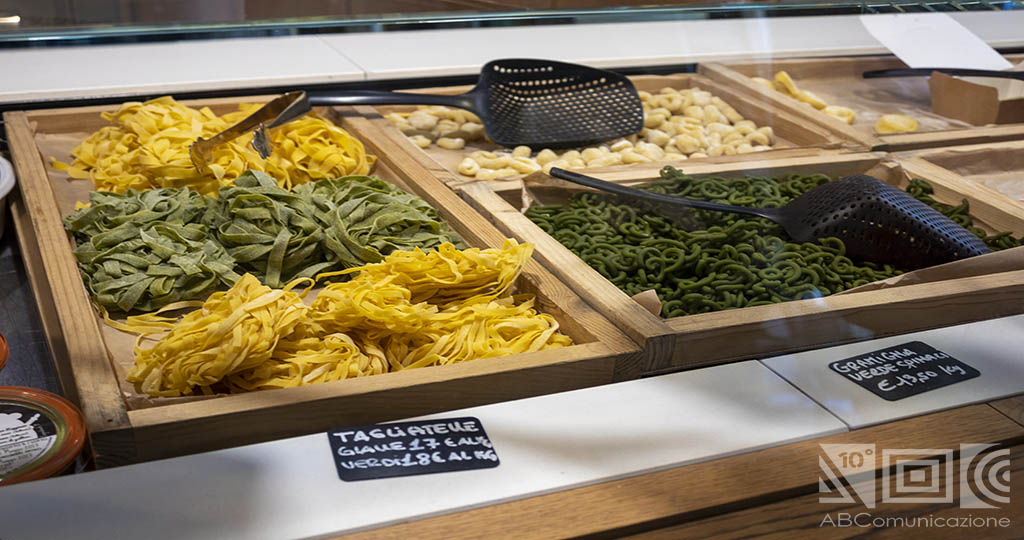
Sfoglia Rina offers both traditional plates, always on the menu, and more innovative ones, that vary every week.
The places are very welcoming and create a warm atmosphere. The client perceives an authentic and homely environment, thanks to little mesures that make the experience in this restaurant particular. For instance, each table fills in their order on a sort of notebook set in a cutting board.
They do not accept reservations but they are very fast in the service. If you want to eat a good plate of fresh pasta in the center of Bologna you just need to go to Sfoglia Rina! For further information you can see the website of Sfoglia Rina.
Bottega Portici
The self-declared high quality Italian food is a gastronomic project of modern street food. Its goal is to promote high quality take-away food, 100% made in Italy. The plates that Bottega Portici prepares are at the same time practical, genuine and appetizing. So, if you want take-away tortellini in Bologna, Bottega Portici is the restaurant you need to go to!
The name Bottega Portici, literally “Porticoes Workshop”, clearly refers to the city of Bologna, and therefore to its gastronomic speciality: fresh pasta. Did you know that the porticoes of Bologna are a UNESCO World Heritage? Read our article to discover more!
However, it is not just sfoglia: the modern street food also offers traditional flavors of pastry and the most refined aromas of italian cafe. In fact, Bottega Portici cooperates with the Master Roaster Manuel Terzi.
Between 2013 and 2017, Bottega Portici opened two restaurants in the center of Bologna: the first one in Indipendenza street, at civic 69, and the second one just next to the Two Towers, in Porta Ravegnana Square. Precisely, this one is in Bega Palace, where it is possible to enjoy handmade tortellini and the beautiful view of the Two Towers from the terrace. The other restaurant, instead, is right in the shopping street. So, if you visit Bologna and get peckish while shopping, you must go to this new restaurant: it is right halfway between the Cathedral of San Pietro and the Montagnola Park.
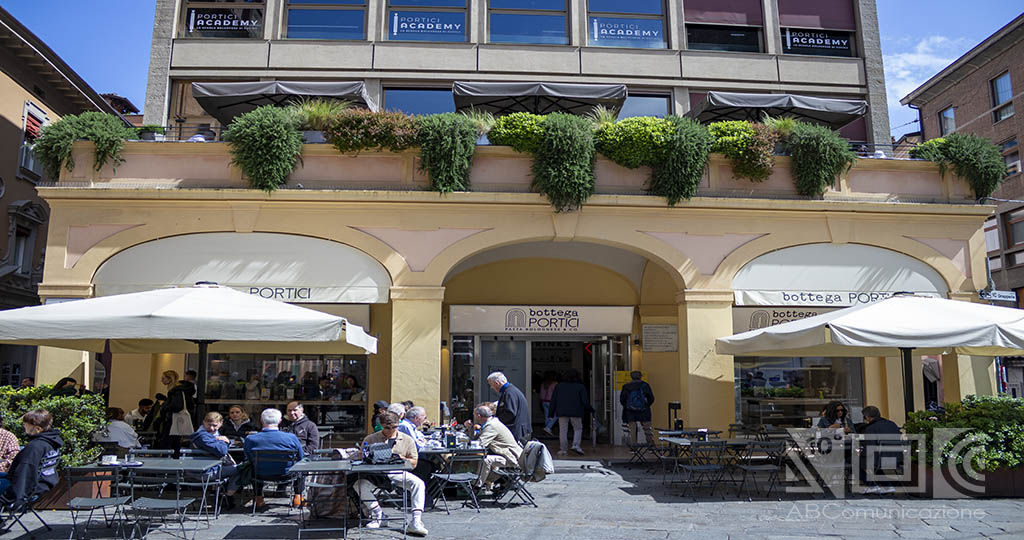
Da Cesari
If you are looking for a more homely and quiet restaurant, you need to try Da Cesari. It is in the town center, in Carbonesi street, at civic 8, less than five minutes of walk away from the Church of San Petronio and the Fountain of Neptune .
This restaurant is just perfect for those who want to enjoy a lunch or a dinner under the banner of the bolognese tradition, away from the more touristic areas.
Da Cesari boasts a very long history: it was born as a tavern and resale of wines in the first part of the 20th century.
The restaurant is divided into two rooms, and has up to 100 table settings. For this reason it is recommended to book.
Da Cesari is open everyday except sundays. The menu and the wine list are available on the restaurant’s website.
Trattoria Casa Mia
Not so far from the town center, the tavern Casa Mia (literally “My House”), offers experiences that are similar to those at grandmas’. The restaurant is in Saragozza street, at civic 91/b, just outside of the city walls, in the first part that leads to the Sanctuary of the Madonna of San Luca.
Casa Mia Tavern serves high-quality plates and abundant portions. The staff is always very kind and available, and the waiting times are minimal. However, even though the place is very nice, the tables are not that much. Luckily, during the warm season the number of setting tables increases, thanks to the outdoor space.
It is recommended to book in order to taste the authentic delights of this little restaurant.
Do you want to discover more restaurants where you can eat in The Erudite? You can also try the Tavern dell’Orsa and the Carracci Restaurant. Otherwise, read our article The five best Taverns and Trattorie in Bologna: from the 15h century to now.
Where to buy the best fresh pasta in Bologna?
There are numerous shops that sell fresh pasta in Bologna, both in the town center and outside the walls. So, if the question is ‘where to buy tortellini in Bologna?’ and it is bothering you, no panic! We would like to point out some of them, but all of them prepare sfoglia according to tradition.
Atti
The Company Paolo Atti & Sons represents from over 150 years the cultural and gastronomic authenticity. The shop still has the original furniture, typical of workshops, making the clients live an experience immersed in the past.
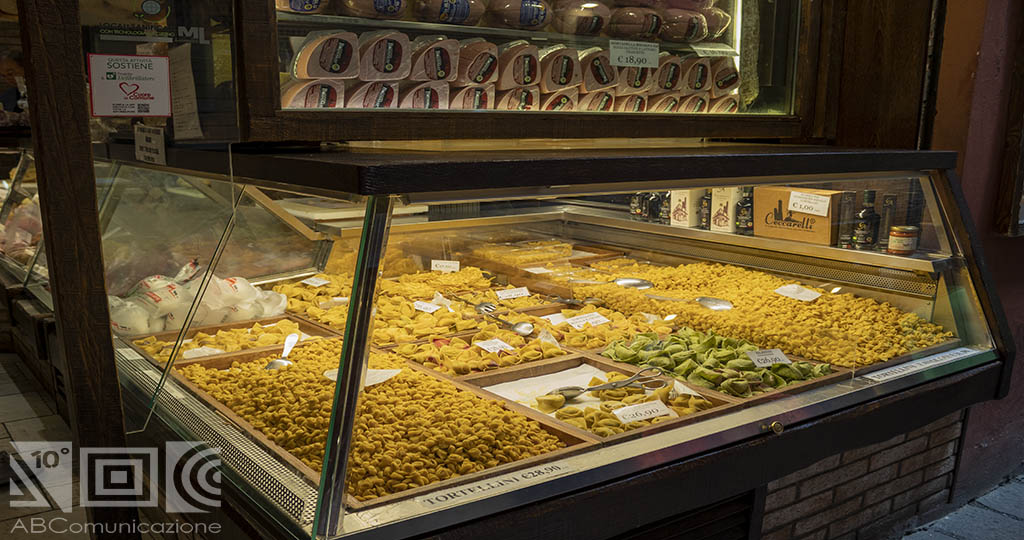
Atti has two shops very near to each other, because once they were connected and composed a very big laboratory. They are in Caprarie street, 7, and Drapperie street, 6, at just one minute of walk. Just to give you an idea, they are near the Seven Churches.
The ancient workshop treats the so-called ‘white art’: pastries, bakery and fresh pasta. Among the more traditional products, we have tortellini and the certosino, also called panspzièl. It is a typical Christmas dessert, made with honey, chocolate, dried and candied fruit. The certosino is he speciality of Bar Billi, that is very close to the Certosa cemetery.
Well, if you visit Bologna you must go to Atti! You will have the chance of admiring a traditional shop that produces in an authentic way the typical plates of bolognese cuisine.
Quadrilatero Market
Otherwise, if you want to walk among the town center in the narrow and picturesque alleys, the Quadrilatero Market is just the thing for you!
Right next to Atti, in fact, there are some alleys that since the Middle Ages host the local market. It is right there that the artisan activities sold their products. Nowadays, the Quadrilatero Market is very focused on food: there are many small shops and stands that sell from fish, to cold cuts, to fresh pasta and dairy products.
Here as well, there are some small shops that expose their handmade pasta: tortellini, tagliatelle, balanzoni, ravioli, and more.
If you want to relax and enjoy a nice aperitivo with a glass of good wine, cold cuts and focaccia, you are in the right place: the gastronomical shops will serve you high-quality products. If you are curious to discover other places for aperitivo, read our article Drinking in Bologna: more than 20 ideas for an italian aperitivo.
La Spiga Amica
Celiacs, do not worry! In Bologna you can eat and buy gluten-free fresh pasta as well.
In fact, the shop La Spiga Amica (literally “The Ear Friend”) sells products for gluten intolerants. It is just outside the city walls, in Francesco Petrarca street, at civic 13/2G. Not only they make sfoglia, but they also produce bread, pizza and pastries.
So, if you visit the center of bologna and then want to walk around San Michele in Bosco, we strongly recommend making a small detour to La Spiga Amica.
Sfoglia Rina
And yes, Sfoglia Rina is not just a restaurant where you can taste good sfoglia plates, but it is also a shop where you can buy fresh pasta!
Both in the Bologna place and in the Casalecchio one, you can buy the most traditional dishes, like tortellini and lasagne, and the most particular ones, like tortelloni filled with buffalo mozzarella. Of course, apart from pasta, you can also purchase seasonings and desserts.
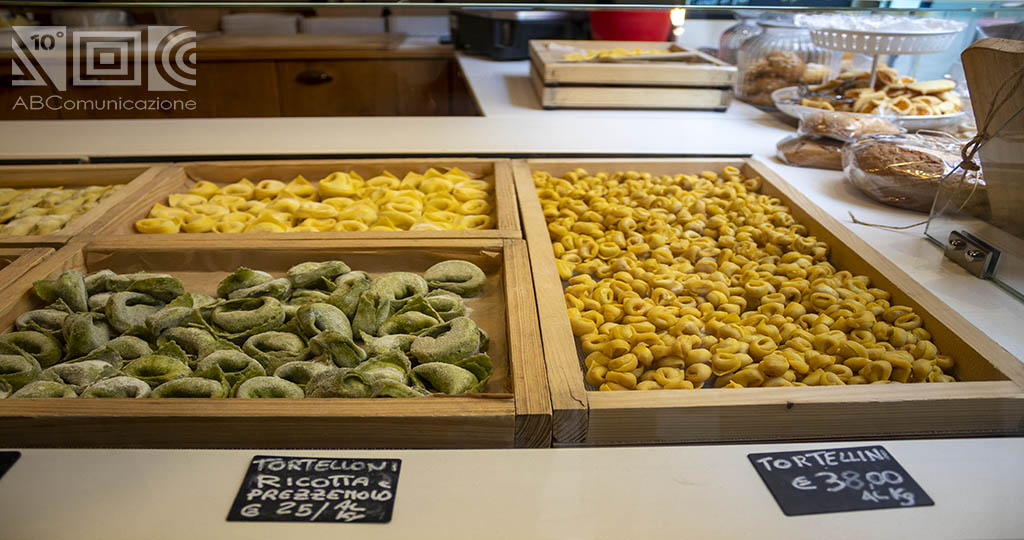
Bottega Portici
One of the uniquenesses of Bottega Portici is the possibility of admiring the working sfogline. This responds to their values, in particular to the desire of promoting high-quality cuisine. And which better way than to show how the plates are realized?
Naturally, apart from admiring the art of sfoglia it is also possible to buy it, to enjoy it at home with family or friends.
Moreover, Bottega Portici also has its own food market, where you can purchase high-quality products from the traditional italian cuisine.
Vecchia Scuola Bolognese
Last but not least, we could not not mention the Vecchia Scuola Bolognese (“Old Bolognese School”) by Alessandra Spisni. In Partigiano street, at civic 7, the bolognese zdaura par excellence founded in 2017 the Association of sfogline. If you believe having already heard her name, you probably saw her on the tv programme La Prova del Cuoco, with Antonella Clerici.
The Vecchia Scuola Bolognese promotes food culture, and it presents itself as the encounter point of the city’s gastronomy, with particular attention to the artisanal sfoglia.
Here you can purchase all kinds of bolognese products: from mustard, to fresh pasta, to the traditional desserts. And it is not it, because the Vecchia Scuola Bolognese also sells the necessary accessories to make sfoglia. Pastry boards, rolling pins, aprons, pasta cutting wheels, cookbooks… they can all be bought at Alessandra Spisni’s school.
Furthermore, if booked in advance, the Vecchia Scuola Bolognese also offers tastings of traditional dishes.
Where to attend a course on fresh pasta in Bologna?
Now that you know everything about fresh pasta, you just have to put your hands in dough! We already mentioned the three places we want to recommend for those who want to learn about this marvelous art. Each of them offers different courses, so we advise you to read it all in order to choose the one that most responds to your needs.
Sfoglia Rina
Both for adults and children, Sfoglia Rina organizes sfoglia courses!
As for adults, in the Casalecchio restaurant every wednesday they give a lesson for the most curious and passionate about cuisine. If you already have a knowledge base of pasta it is better, but it is not a fundamental requirement to participate.
The lessons, that last one hour and a half, are the following five:
- sfoglia dough
- balanzoni
- vegan tortelli
- not filled pasta
- lasagna
It is possible to purchase the full package, but also a single lesson.
Sfoglia Rina also offers to teach the little ones! So, if you have children from six to twelve years old, these fresh pasta laboratories can be a good option to try.
From October to December, on Saturday afternoons, the restaurant offers a play visit, in which every step faces a new passage in learning the art of egg pasta. The lessons always are in Casalecchio, and they last one hour and a half as well. The seven stages of the path are the following:
- tortelli filled with pumpkin
- balanzoni
- tagliatelle and maccheroni with chestnut flour for Saint Martin
- tortellini
- gnocchi and passatelli
- lasagne
- sweet tortellini
For children as well it is possible to purchase a single lesson, three of them, or the entire package. If you bring a friend or a sibling you will get a discount.
All the information, for adults and children are available on the website of Sfoglia Rina.
Bottega Portici
The Portici Academy also teaches how to make sfoglia and more! In fact, according to their values of genuine and high quality products, they give different courses that respond to all kinds of gastronomies, both Italian and non-italian.
With the experts in the field, you can try your hand on literally everything! Lessons take place in the restaurant next to the Two Towers.
Here, some examples of very interesting lessons: pan pizza, bread made with sourdough, pasta brisée, shortcrust pastry for desserts, and, of course, all kinds of sfoglia, colored or not. And it is not it, because Bottega Portici also offers the possibility of preparing a menu, gourmet or for parties, with the starred Chef Gianluca Renzi.
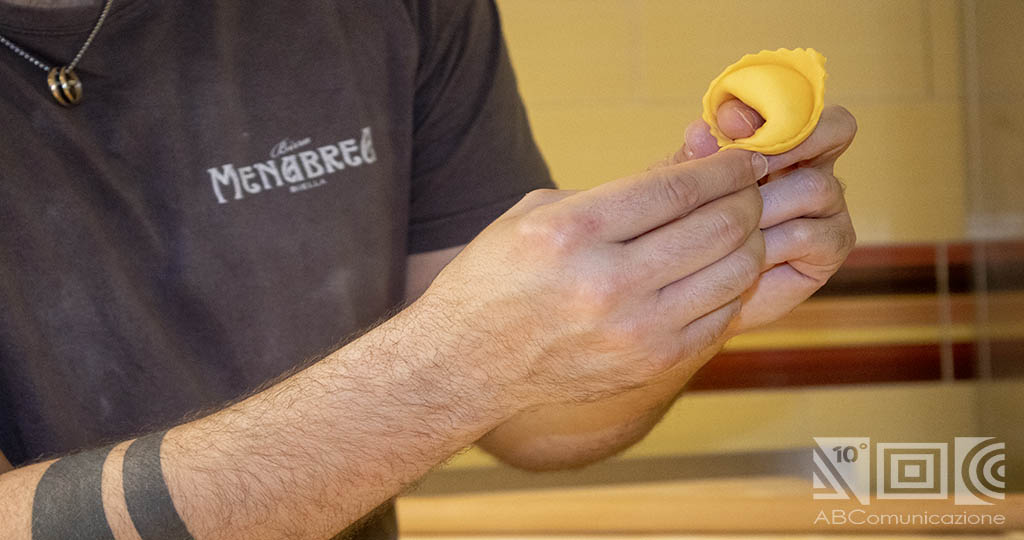
Moreover, for those who love foreign cuisines there are courses on thai plates, on ramen, on sushi, and on tea and japanese desserts.
And it is not all, because Bottega Portici also organizes courses on beverages: craft beer and wine tasting. Furthermore, it give free lessons such as sensory analysis of coffee and how to make the perfect cappuccino at home
Well, if you want to delve into different kinds of dishes, Italian and foreign, we strongly suggest you give a look at the agenda of Portici Academy!
Vecchia Scuola Bolognese
If you want to discover the secrets behind the bolognese tradition instead, you need to go to Alessandra Spisni. In fact, the Vecchia Scuola Bolognese, gives lessons on crescentine, gnocchi and, of course, sfoglia.
If it is the first time you put your hands in dough, we suggest you begin with a sfoglia lesson. Then, when you will have learnt the basis of dough, you can attend lessons focused on the different shapes: tagliatelle, balanzoni, tortellini, lasagne and smeraldini! These literally are “small emeralds”, a kind of filled pasta that Alessandra herself invented: they are bigger than tortellini, made with green dough and seasoned with fresh cream.
If you want to see all the available courses visit VSB Bologna.
While, if you want to try it at home, on Alessandra Spisni’s website there are many recipes, both from the tradition and not, both savory and sweet.
Are you spoiled for choice? In order to discover the whole art of sfoglia, we recommend visiting Bologna for several days. If you are looking for a stay, we point you out Ghisiliera B&B. In addition, for the bed and breakfast clients there is the chance of attending private lessons about sfoglia. The structure has all the required accessories to make you try and have fun with the experts of the sector!
Bibliography
- Cesari L., Storia della pasta in dieci piatti: dai tortellini alla carbonara, Milano, Il Saggiatore, 2021.
- Passeri R., Storia della gastronomia bolognese dell’ottocento, Bologna, Barghigiani, 1983.
- Varni, A., Lungo un nastro di sfoglia: personalissimo viaggio dell’Emilia-Romagna della pasta ripiena e dei brodi, Bologna, BUP, 2015.




